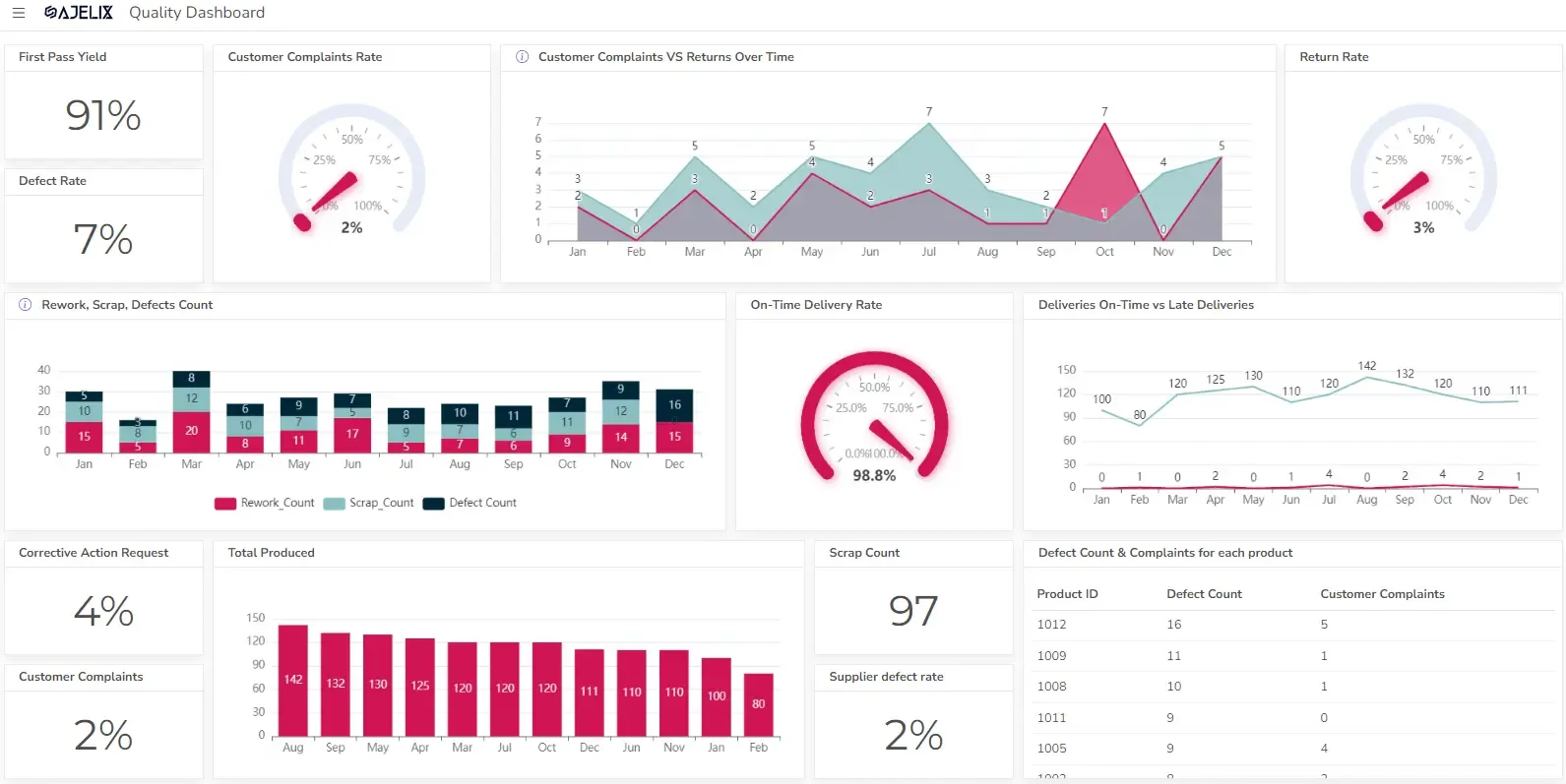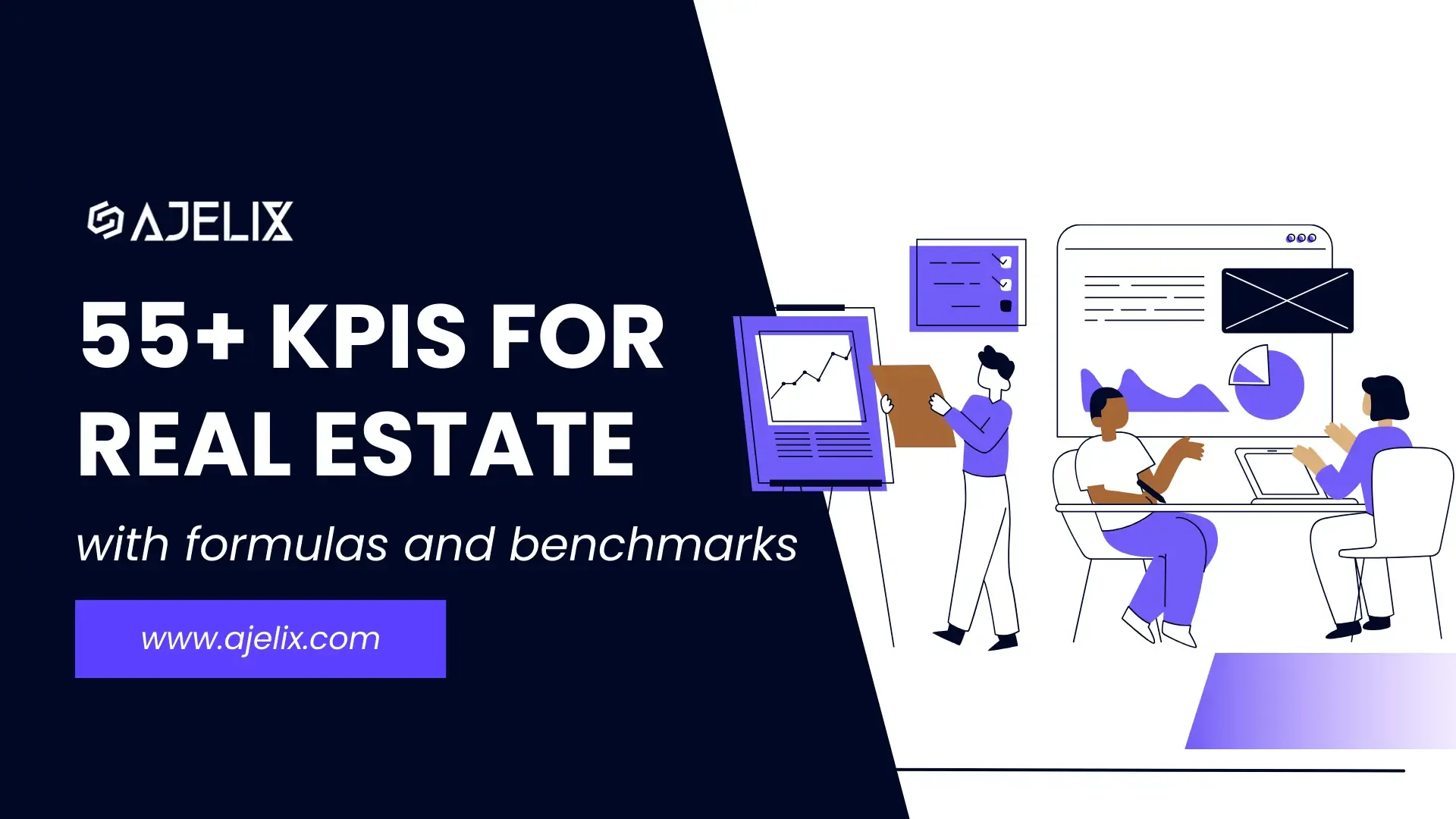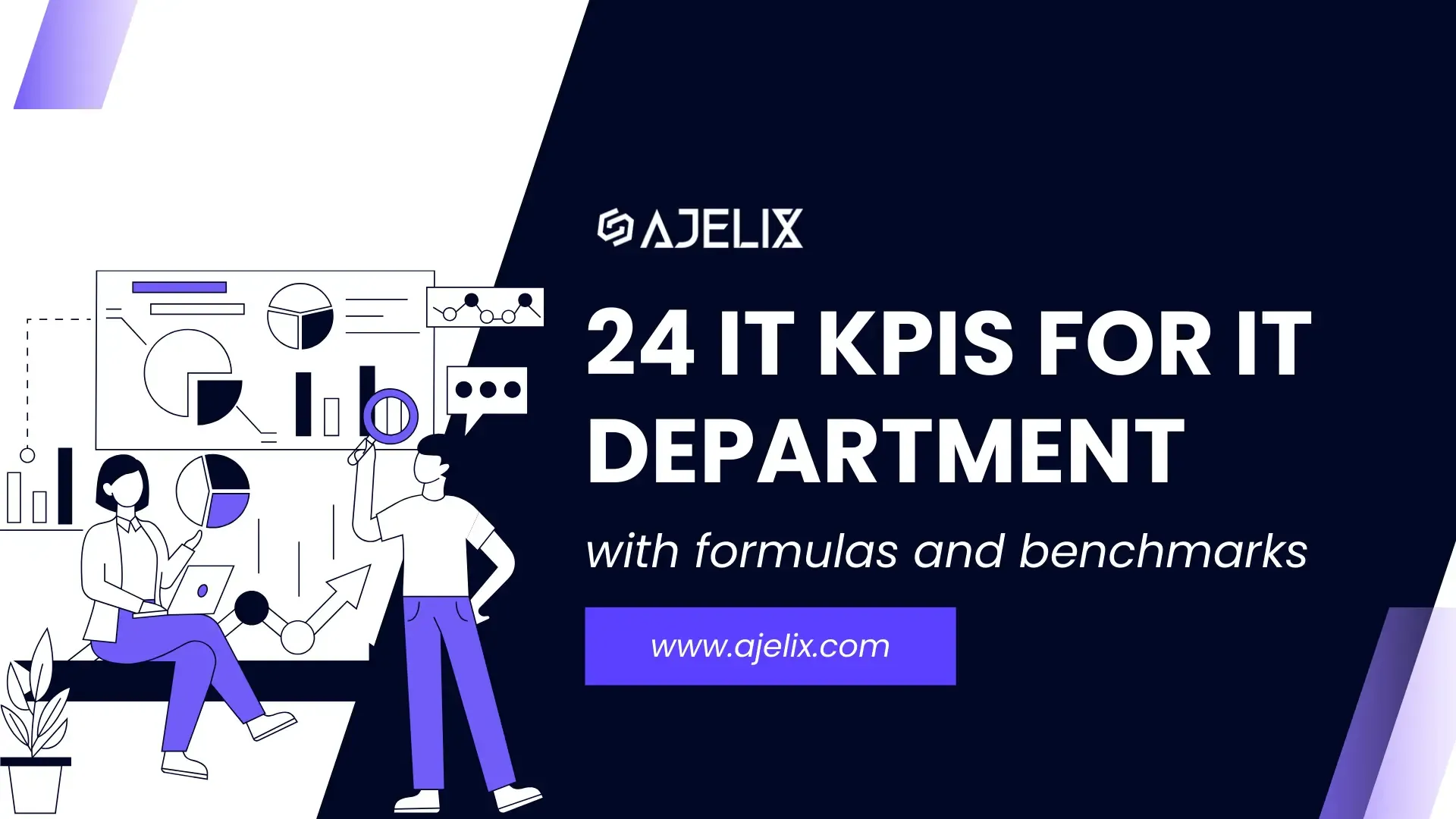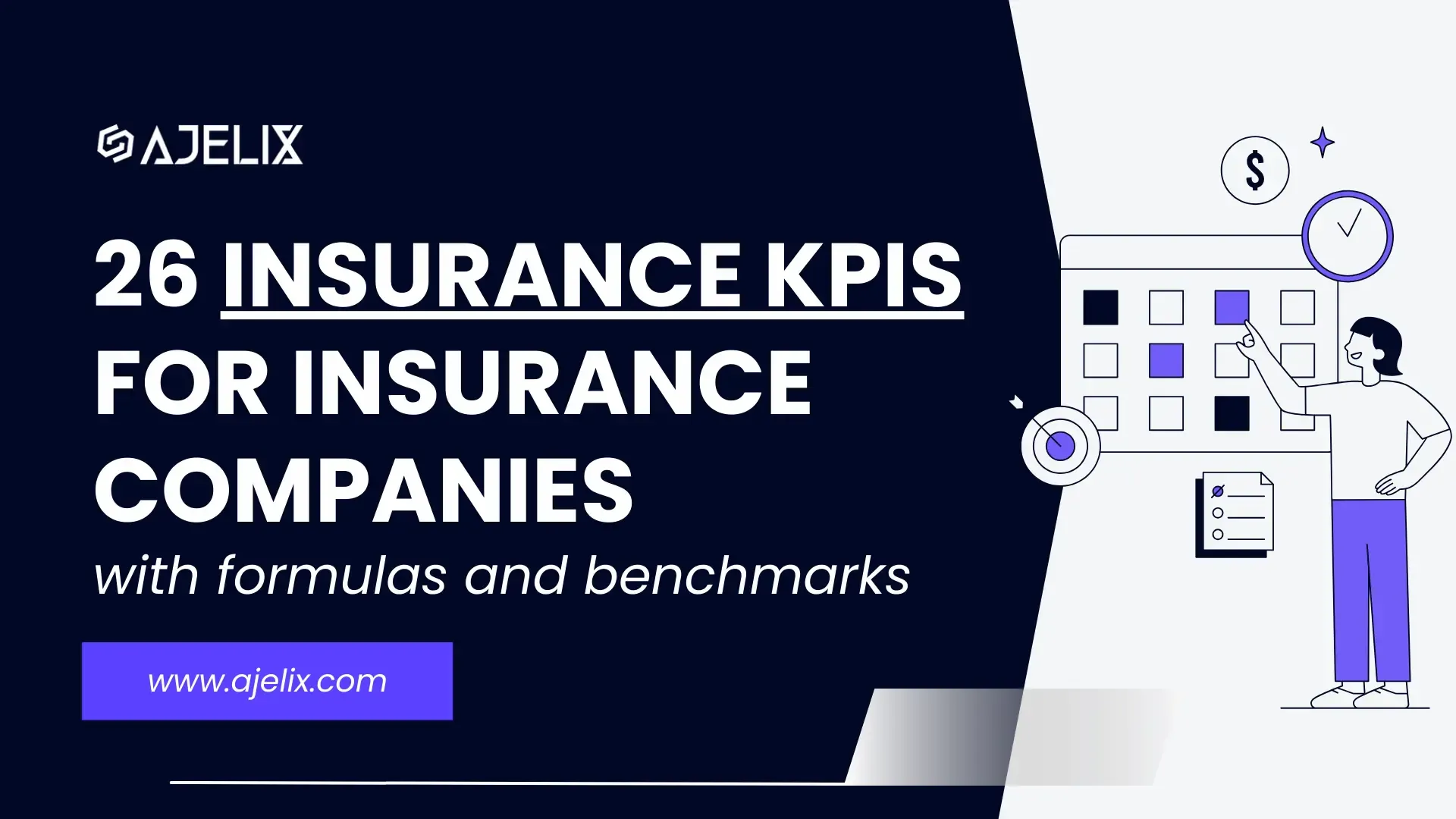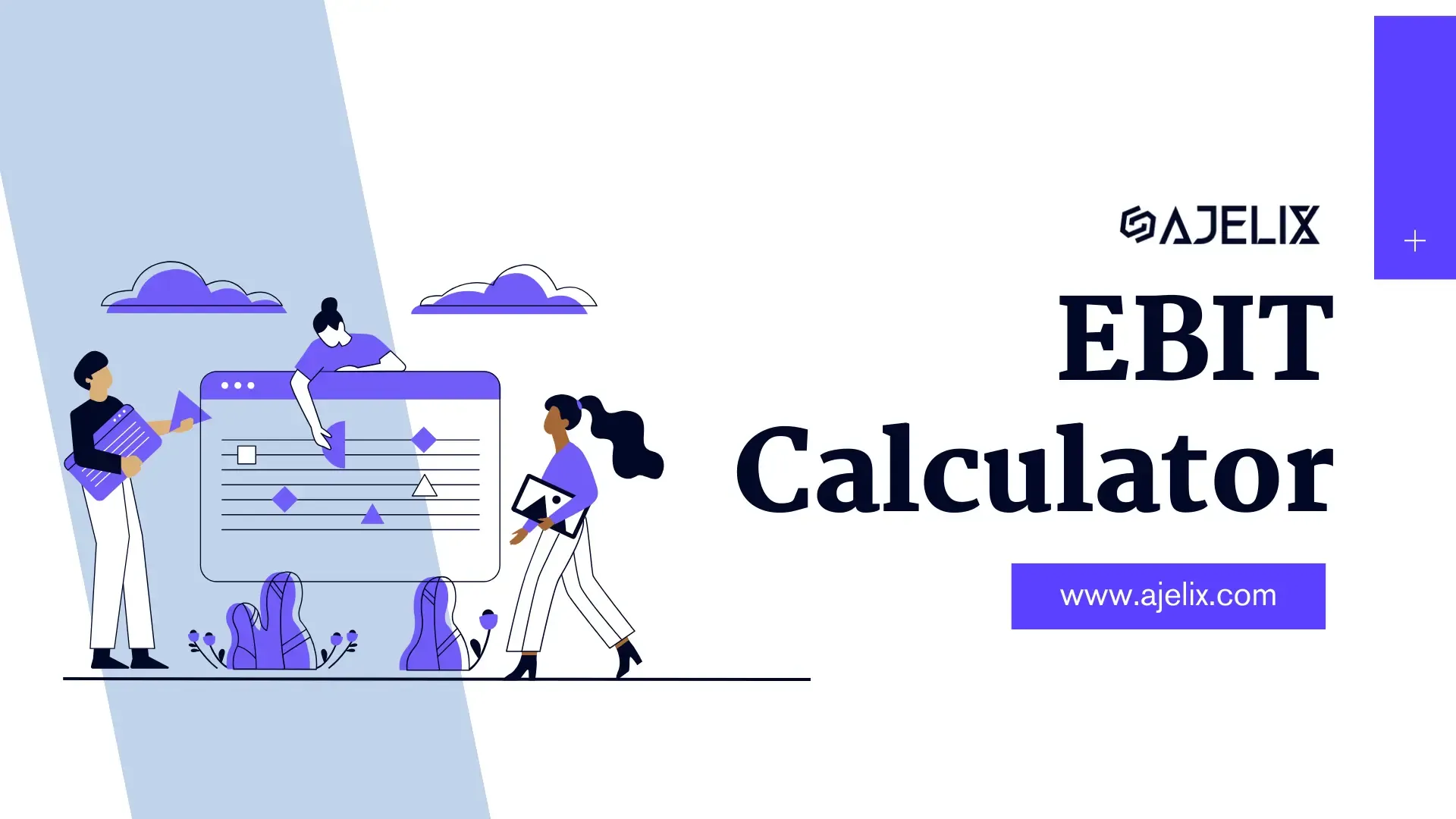- Home
- Data Visualization
- Tools
- AI Data Analyst
- Excel Formula Generator
- Excel Formula Explainer
- Google Apps Script Generator
- Excel VBA Script Explainer
- Excel VBA Script Generator
- Excel VBA Code Optimizer
- Excel VBA Code Debugger
- Google Sheets Formula Generator
- Google Apps Script Explainer
- Google Sheets Formula Explainer
- Google Apps Script Optimizer
- Google Apps Script Debugger
- Excel File Translator
- Excel Template Generator
- Excel Add-in
- Your Virtual AI Assistant For Excel Spreadsheets
- AI Answer Generator
- AI Math Solver
- AI Graph Generator
- AI SQL Generator
- Pricing
- Resources
- Author:
7 Best AI Tools for Excel Data Analysis (2026 Comparison)
- Last updated:November 29, 2025
- Tags:
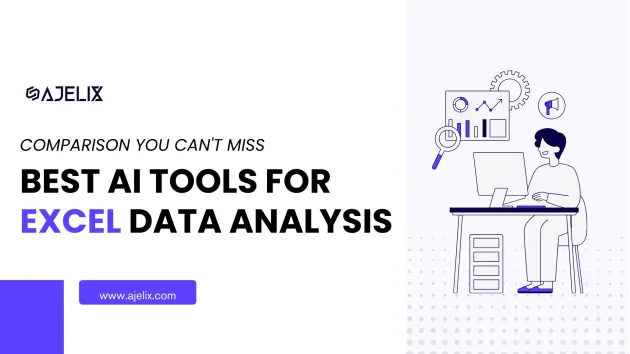
Explore other articles
- 7 Productivity Tools and AI Plugins for Excel
- Julius AI Alternatives: Top 5 Choices 2026
- No Code Analytics: Top Tools in 2026
- Automation Tools for Excel in 2026: Built-In & Third-Party
- 5 Healthcare Data Analytics Trends 2026
- Best Analytics Platform For Startups In 2026
- 15 Best AI Tools For Startups In 2026 We Tried
- 7 Best AI Tools for Excel Data Analysis (2026 Comparison)
- AI Data Intelligence For Workspace
- Conversational Analytics & AI
Analyze data with AI
Which of the 7 best AI tools for Excel data analysis is right for you? That’s the question you’re here to answer, and by the end of this article, you will.
TL;DR
The best AI tools for Excel data analysis, based on the reviews, are Ajelix, Powerdrill AI, Numerious.ai, GPTExcel, Julius, XLSTAT, and Cube.
Let’s compare the Top Excel AI tools of 2026 based on their features, pricing, and pros & cons. As a bonus, we have created a free PDF checklist to help you evaluate each tool and determine which fits you best.
Why Use AI Tools for Excel Data Analysis?
Using AI tools in your work with Excel can have many benefits: from speeding up your workflow to reducing mistakes in your spreadsheets.
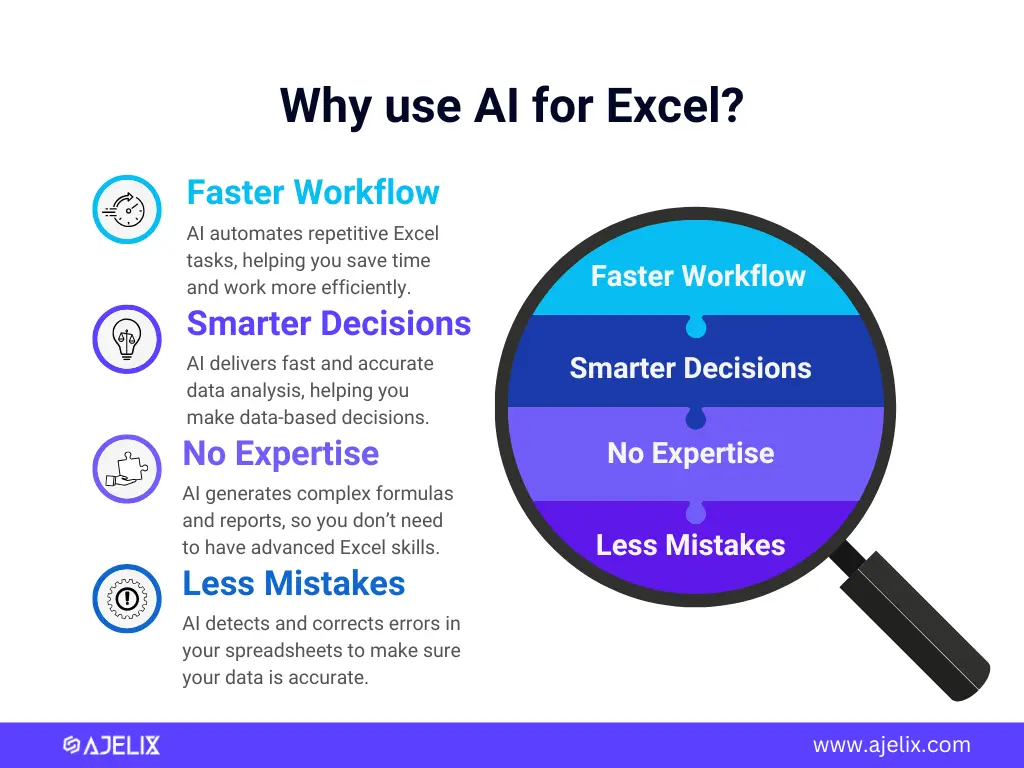
AI can change the way you work in spreadsheets, making things quicker, simpler, and less stressful. Plus, it makes advanced data insights accessible even if you’re not an Excel expert.
Is there a downside to using AI in Excel?
While AI tools offer many benefits, they aren’t perfect. Sometimes AI-generated formulas or insights may not fit your data exactly, so it is important to review the results. Relying too much on AI can also limit your understanding of Excel, and some AI tools need access to sensitive data, raising privacy concerns. We suggest seeing AI as your helpful assistant.
7 Best AI Tools for Excel Data Analysis
Let’s cut the fluff. You are here to learn more about each tool, so here they are. Let’s compare their key features, cons, pricing, target users, and learning curve.
1. Ajelix
Ajelix is an AI toolkit built for automating complex Excel tasks and simplifying data analysis, without needing coding skills. From generating advanced formulas to cleaning messy datasets and producing interactive dashboards, it turns time-consuming spreadsheet work into fast and intelligent outputs.
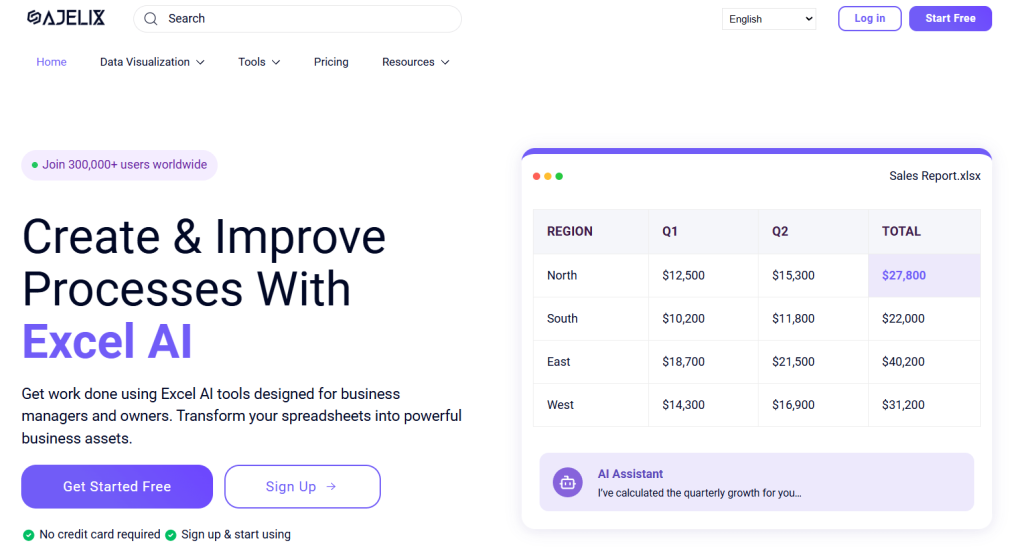
Target Users
Ajelix is the solution for users who struggle with time-consuming or repetitive data tasks. It’s especially well-suited for business managers and founders across industries, whether it’s CEOs needing interactive and real-time reports, managers focused on forecasting and performance tracking, or team leads looking to uncover trends and insights from campaign data.
Ajelix Key Features
- Rich variety of AI Tools & Access to BI Platform: Ajelix offers more than 20 AI productivity tools alongside a Business Intelligence (BI) platform. This combination supports a wide range of use cases: from generating complex Excel formulas and SQL queries to cleaning messy data and building interactive dashboards.
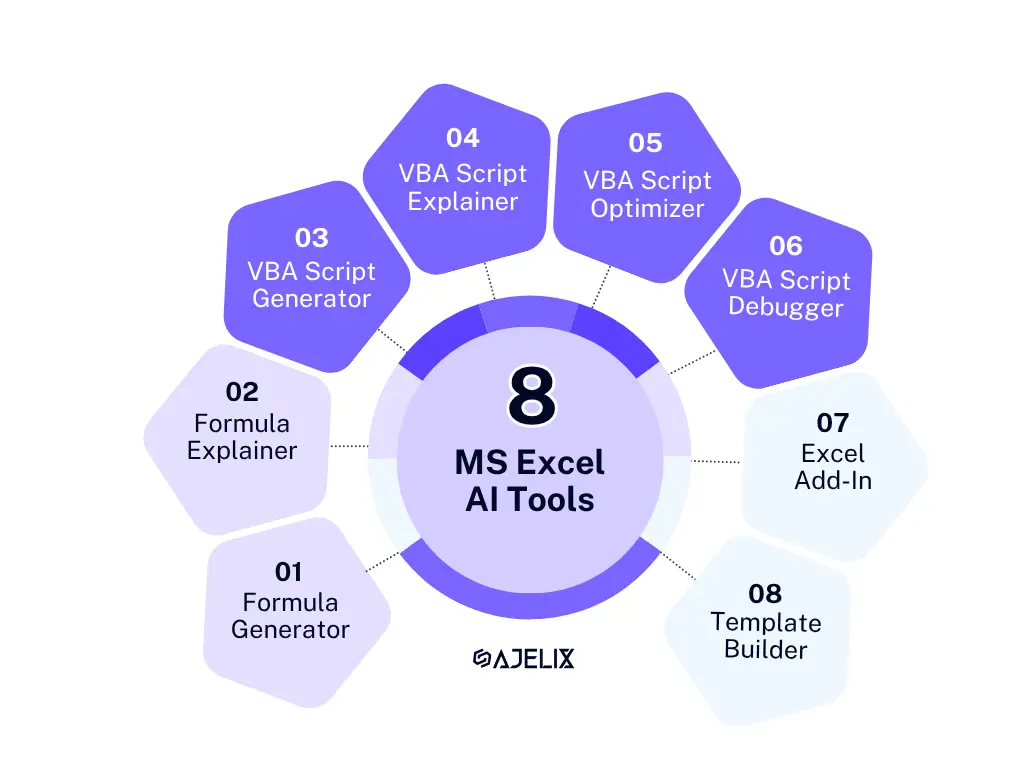
- Multi-Source Support and Real-Time Data Integration: Ajelix enables users to interact in their native language and supports a variety of data sources, including PostgreSQL, MySQL, Google Sheets, CSV files, Custom API, and more, making it highly adaptable to various workflows.
- Collaborative tools and live data access: Users can seamlessly share reports across teams while monitoring real-time data updates for faster and more informed decision-making.
- Advanced Analytics via Chat: Users can interact with their data through a simple chat interface, unlocking insights, generating reports, and automating data cleaning with the AI Data Analyst tool.
- User-Centered Services: Ajelix places a strong emphasis on user feedback, data security and personalization. Its tools, including the AI Data Analyst, were developed based directly on user input and surveys, reflecting a user-first philosophy.
- Transparent & Upfront Pricing: With clearly listed pricing plans and no hidden fees, Ajelix promotes transparency and trust. Users can evaluate and adopt the right tools with confidence, knowing exactly what features they’re getting at each plan.
Ajelix Cons
- Potentially Challenging for New Users: Ajelix offers a wide range of advanced features, including a BI platform and over 20 AI spreadsheet tools. As a result, its broad scope can make onboarding feel challenging at first.
- Not enterprise-grade: While Ajelix can be a valuable tool for data analysis within enterprise environments, at its core, it’s not designed to handle large-scale or big data workloads.
Pricing
Ajelix offers a freemium model with 4 pricing plans: Free, Pro, Expert, and Business. Since the Free Plan is made for users who want to try Ajelix at first, it has limited access to both AI tools and the Business Intelligence (BI) platform, allowing up to 3 messages per day.
The Pro Plan is suitable for users who primarily want to use the AI tools. It includes unlimited access to more than 20 AI tools and up to 250 AI messages per month.
The Expert and Business Plans unlock the full capabilities of the BI platform. Therefore both offer unlimited AI tool usage and messaging, along with full access to the BI platform. The Business plan, as the most comprehensive option, supports unlimited dashboard creation and up to 100 BI data sources, which is ideal for teams with advanced reporting and data integration needs.
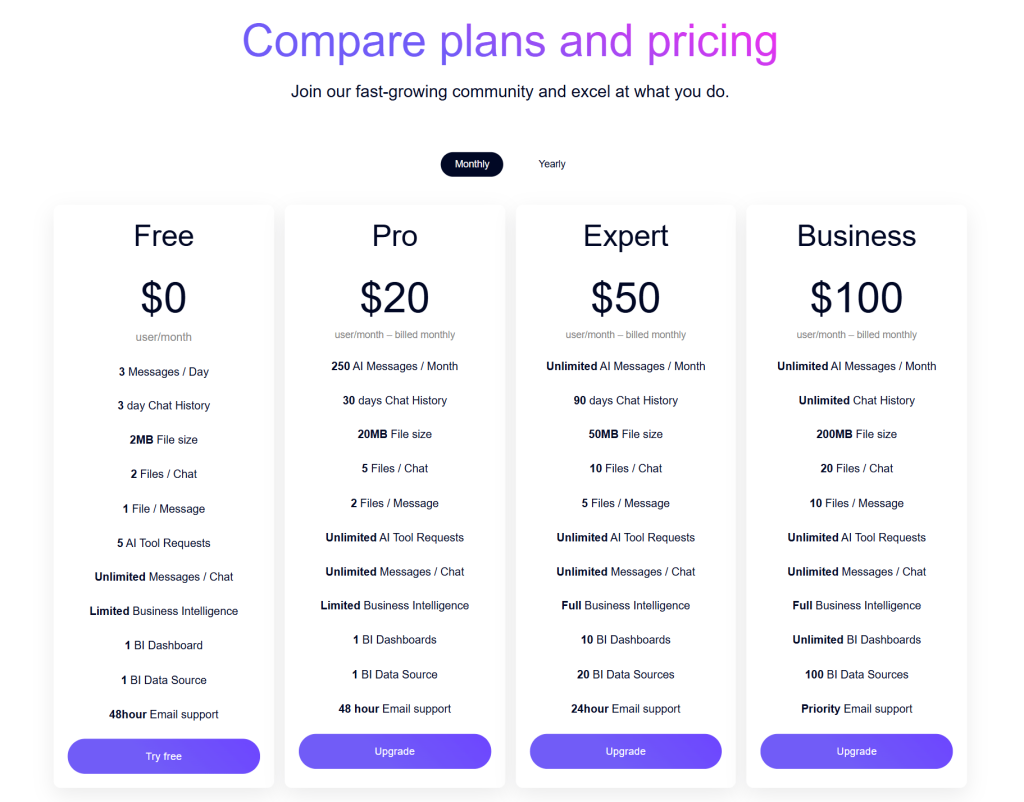
Learning Curve
Ajelix is built with accessibility in mind, especially for users without technical backgrounds. Users aiming to take full advantage of the BI Platform may need a little time to explore the platform’s full capabilities. Fortunately, Ajelix provides resources, templates, and support to help smooth the onboarding process.
For example, the Ajelix AI Data Analyst can help with user onboarding. Through a simple conversation, users can chat about their data struggles and eventually solve any confusion.
2. Powerdrill
Powerdrill is an AI data analytics platform designed to help users explore, visualize, and understand their data without writing code. Thanks to its natural language interface, Powerdrill helps teams generate insights, build dashboards, and create reports.
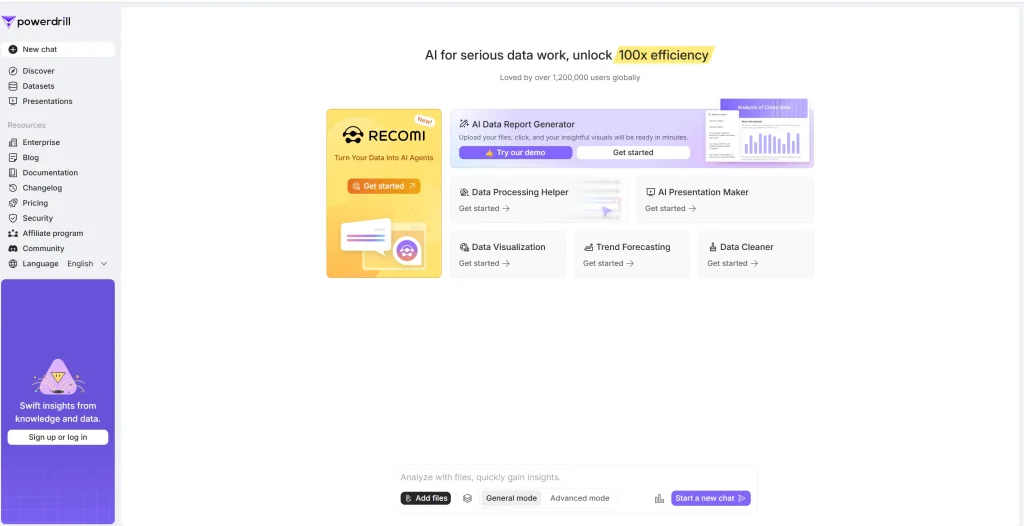
Target Users
Powerdrill is designed for a variety of spreadsheet users who don’t have deep technical skills but need fast and accessible data analysis. Professionals across various industries, like education, retail, and finances, can find this tool helpful.
Powerdrill Key Features
- Ultra-fast processing: Powerdrill analyzes data faster than traditional tools, even with millions of rows.
- Advanced analytics: The tool can perform advanced tasks, like clustering, predictive analytics, and trend forecasting.
- Natural language interface: Users can ask questions in plain English and get instant answers, charts, and summaries.
- Collaborative features: It is easy to share reports, datasets, and presentations within teams.
- Upfront Pricing: Pricing availability lets users carefully assess which plan they need without hidden fees or surprises.
Powerdrill Cons
- Language support limitations: The conversational interface primarily supports English, which may limit usability for non-English speaking users.
- High resource consumption: Powerdrill’s fast processing needs computational resources, and as a result, it may not work for users with limited hardware capabilities.
Pricing
Powerdrill offers a freemium model and four plans: Free, Basic, Plus, and Pro. Therefore, the more advanced the plan, the larger the quota for each feature.
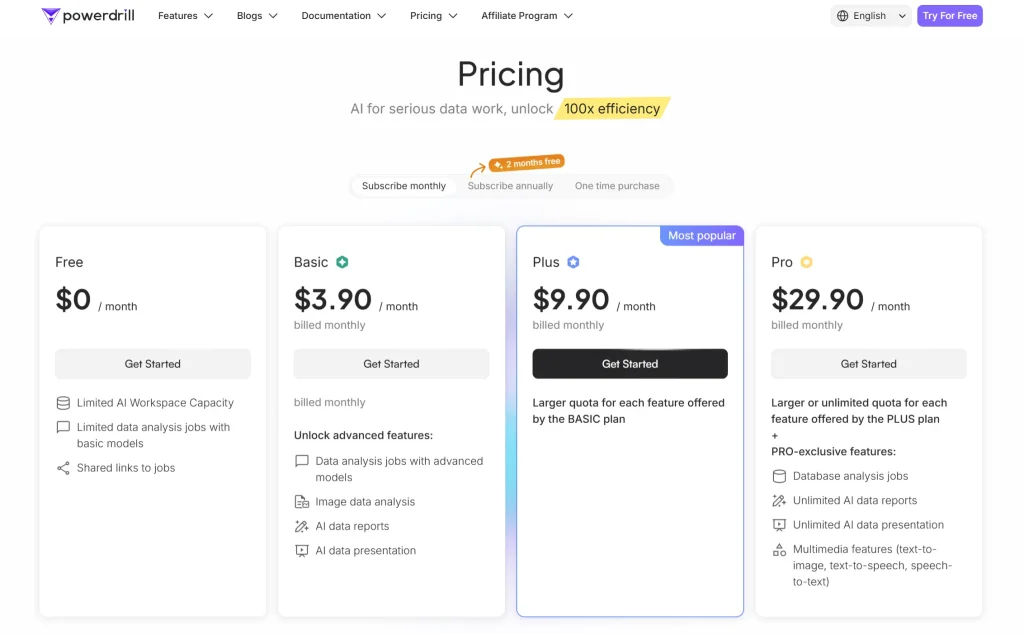
Learning Curve
Powerdrill is designed for ease of use with a natural language interface and built-in onboarding tips and templates. More advanced features like custom metrics or data modeling may take some time to master.
3. Numerous.ai
Numerous.ai is an add-on for Google Sheets and Microsoft Excel, bringing advanced AI automation directly into spreadsheets. Because of its ChatGPT-like capabilities, users can automate repetitive tasks, analyze data, and create content without leaving the spreadsheet environment.
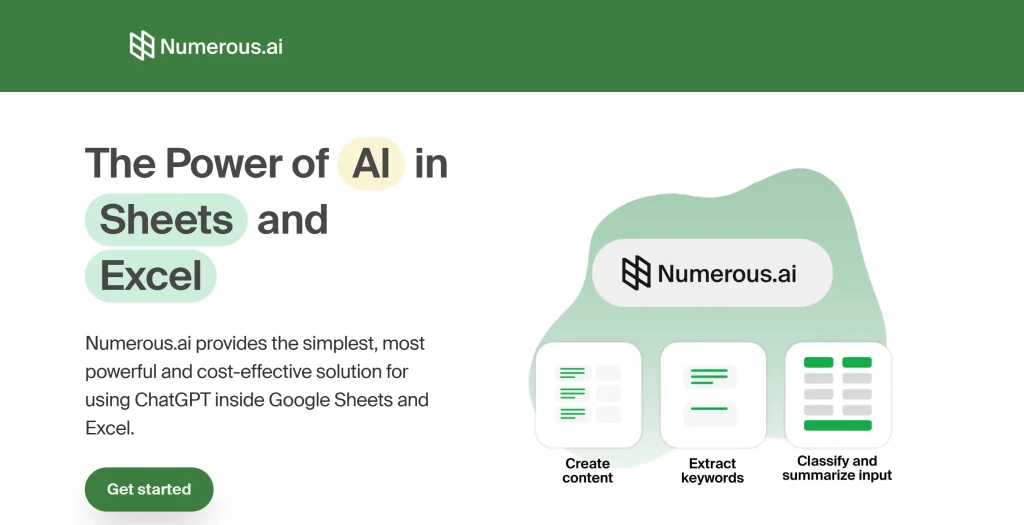
Target Users
Numerous.ai is designed for a broad range of spreadsheet users who want to boost productivity and automate workflows. It’s especially useful for professionals in content creation, digital marketing, research, product management, and teams across industries like education and technology.
Numerous.ai Key Features
- In-cell AI integration: Functions like =AI() and =INFER() bring ChatGPT-style responses directly into spreadsheet cells, enabling real-time text generation, data categorization, and formula creation without leaving Excel or Sheets.
- Spreadsheet-native automation: Accomplishes high-volume tasks such as summarizing survey responses, cleaning messy inputs, or generating SEO content, without needing external tools or scripts.
- Onboarding with templates: Numerous.ai offers prebuilt examples and function suggestions directly in the interface, lowering friction for new users.
- Collaborative team access: The add-on enables multi-user environments with shared templates and workflows, therefore creating a collaborative workspace.
- Optimized token usage: Designed to minimize duplicate prompts, helping users get more value out of their monthly limits.
You might be interested: 7 Best AI Tools for Data Analysis
Numerous.ai Cons
- No Upfront Pricing: Full pricing details are only available after signing up, which may be inconvenient for comparison shopping.
- Limited scope as an add-on: Since this tool functions only as a Sheets and Excel extension, it offers less depth than the other full-featured AI spreadsheet tools mentioned in this article.
Pricing
Numerous.ai reveals the full pricing information only after signing up, offering three subscription plans: Person, Pro, and Enterprise. Free trials are available for a limited number of days. As with most tools, higher tiers reduce restrictions and add advanced features.
To learn more, sign up and visit their pricing page.
Learning Curve
Numerous.ai is easy to adopt for anyone familiar with spreadsheets, with minimal setup required to start automating tasks. Thanks to its built-in AI access, there is no need for custom API keys, which simplifies onboarding but limits flexibility for more advanced users.
4. GPTExcel
GPTExcel is an AI-powered tool designed to assist with spreadsheet tasks, like generating formulas, SQL queries, and table templates. In addition, it offers features like chatting directly with your Excel files, converting table images to spreadsheets, and extracting insights.
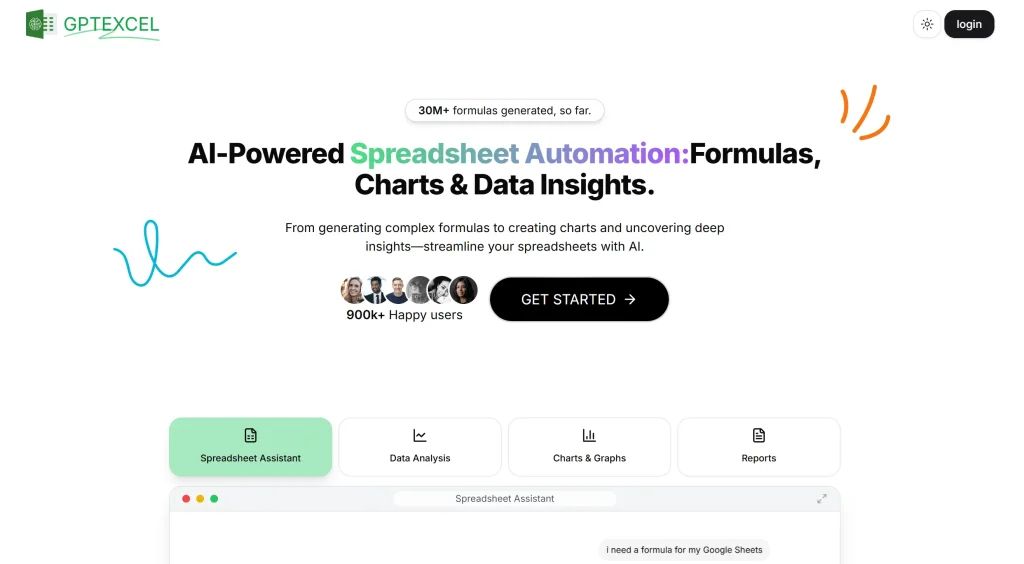
Target Users
GPTExcel is designed for a wide range of spreadsheet users who want to simplify data workflows and automate tasks. As a result, professionals across industries, such as business analysts seeking quick data summaries or market researchers handling survey data, can effectively use the tool.
GPTExcel Key Features
- Variety of Excel AI Tools: The tool can generate complex formulas, SQL queries, scripts, regex, and table templates all in one platform.
- Multilingual and Multi-Platform Support: GPTExcel understands over 50 languages and works across Microsoft Excel, Google Sheets, LibreOffice Calc, and Airtable.
- Interactive Chat with Excel Data: Because of the conversational interface, users can get insights directly from a spreadsheet.
- Image-to-Table Conversion & Visuals: Users can convert tables from images into editable spreadsheets and automatically create charts and graphs.
- Upfront Pricing: Availability of pricing lets users access powerful AI features without hidden fees or surprises.
GPTExcel Cons
- Restricted File Format Support: GPTExcel currently supports only Excel and CSV files for analysis, thus limiting flexibility with other formats.
- Limited Use for Advanced Tasks: The tool can generate simple to moderately complex formulas, queries, and scripts. Users might need manual intervention or an alternative tool for advanced tasks.
Pricing
GPTExcel offers a freemium model. The free plan includes up to 4 requests per day and access to tools, like Regex Assistant, SQL Query Assistant, and others. Whereas the Pro Plan ($6,99/month) offers up to 1000 requests per day, access to AI Chat, and higher-quality AI tools.
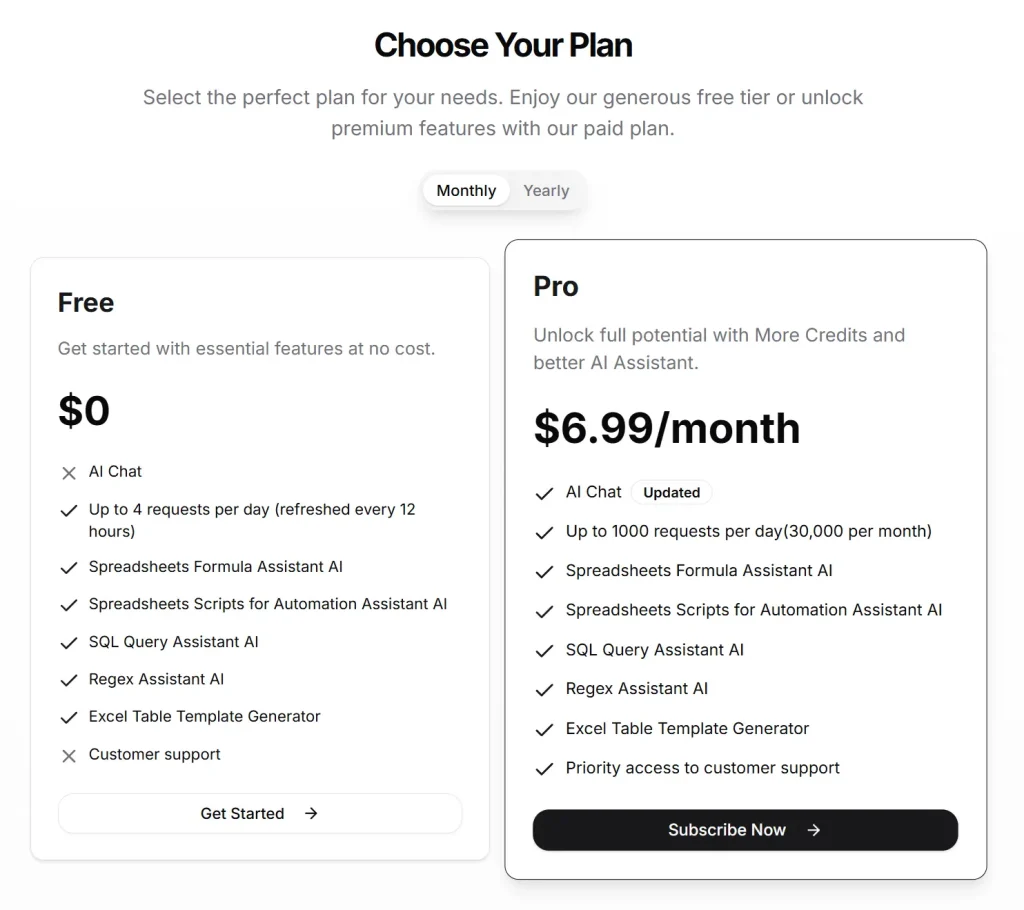
Learning Curve
GPTExcel is designed to be intuitive for beginners and experts alike. However, unlocking its full potential, especially for advanced automation and scripting, may require some knowledge of spreadsheet concepts.
5. Julius
Julius is an AI-powered assistant for statistical analysis and data science. Because of its multiple large language models (LLMs), the tool can intelligently analyze data by writing and executing code based on natural language prompts.
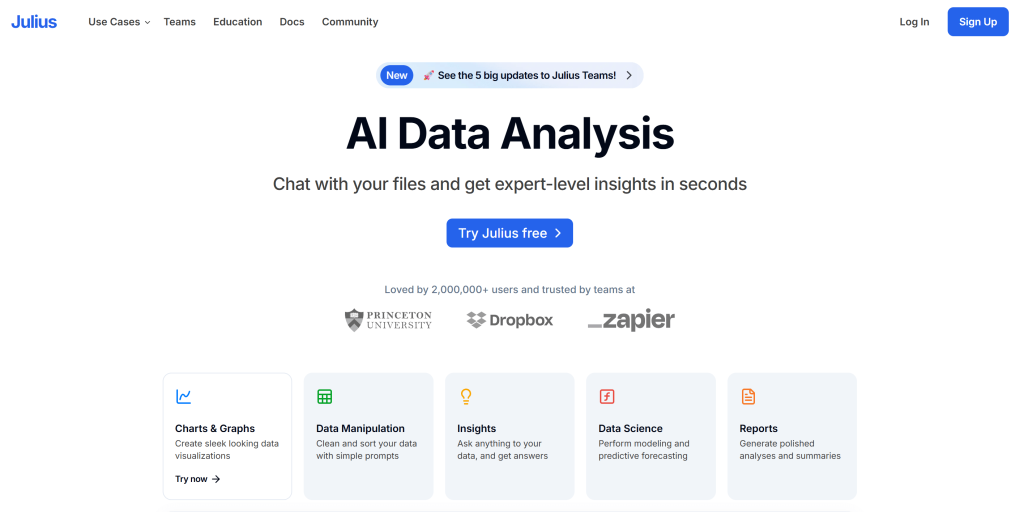
Target Users
Julius offers a discount for students and academics, signaling a strong focus on the educational sector. However, it is also a capable solution for other users, such as team leads or founders. With specialized versions like Julius for Labs, Julius for Universities, and Julius for Teams, it adapts to various industries, including marketing, finance, and education.
Julius Key Features
- Natural Language Prompts: The simple input style makes complex analysis feel conversational.
- Multi-model AI Backend: The tool selects the best language model for each task, and as a result delivers accurate data.
- Secure Data Handling: Each user’s data is isolated, with sandboxed code execution and on-demand data deletion.
- Scalable Real-time Data Sync: Because of the seamless integration with multiple live data sources (APIs, databases, etc.), spreadsheets are automatically updated.
- Collaborative Workspace: Julius enables teams to work together, leading to more efficiency on shared data tasks.
You might like: Comparison of 9 Analytics Software Tools
Julius Cons
- Technical Reliability: In the Julius Community Forum, users tend to report outages, sluggish performance, and broken features, especially when trying to run charts, workflows, or simple data operations.
- Slow or Unresponsive Support: Users also report that Julius’s help center and chat support take a long time to respond, which can be frustrating when facing critical bugs.
Pricing
Julius uses a freemium model, letting users explore basic AI data analysis for free. As needs grow, users can upgrade to paid plans that offer more messages, collaboration tools, and advanced features for professionals and teams.
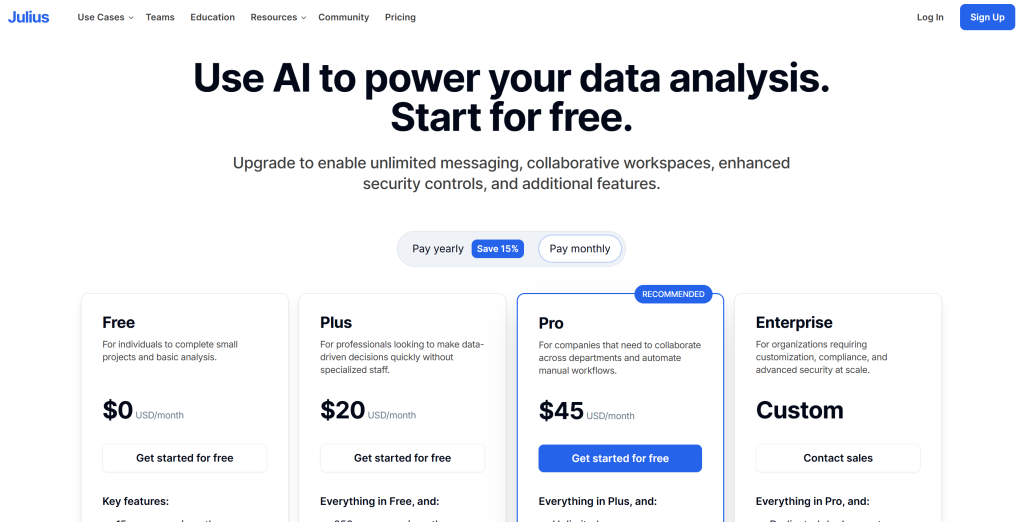
Learning Curve
Julius is designed to make statistical analysis accessible to users without deep coding or data science experience. While it offers powerful AI-driven analysis and automates code generation, some familiarity with data concepts could help users get the most out of it.
6. XLSTAT
XLSTAT is a statistical analysis add-on for Microsoft Excel, tailored for professional-grade statistical tasks. It offers AI tools covering data preparation, hypothesis testing, modeling, and machine learning.
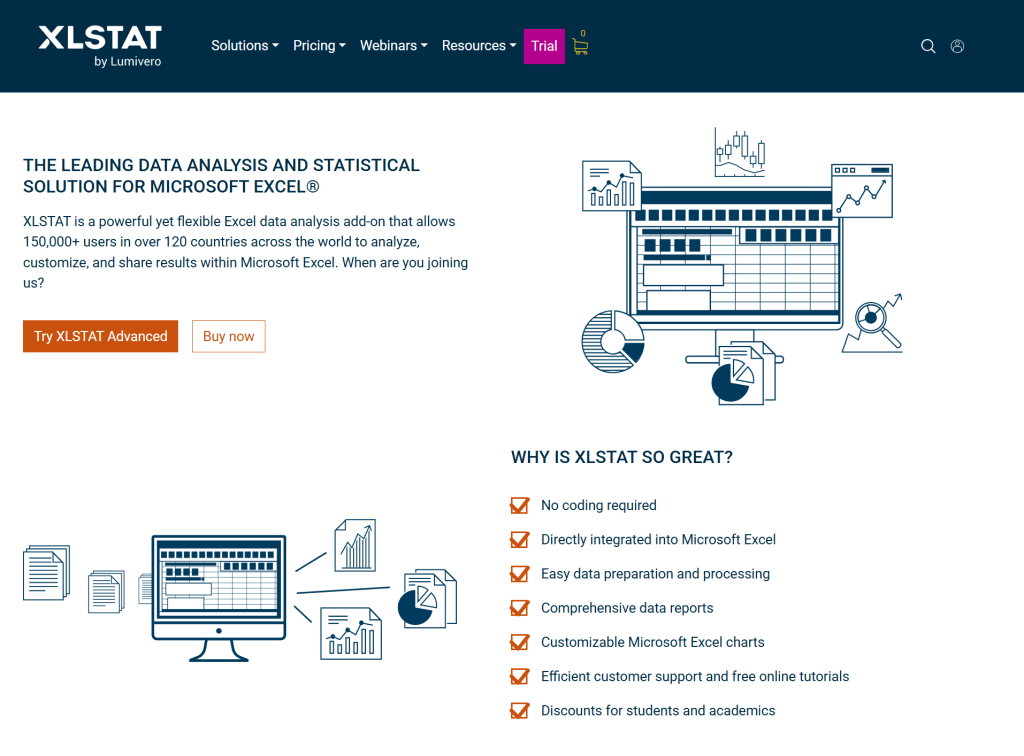
Target Users
XLSTAT is designed for statisticians, researchers, analysts, and educators who require a comprehensive suite of statistical tools. With generous academic discounts compared to commercial pricing, it’s particularly well-suited for use in education, healthcare, quality control, and market research.
XLSTAT Key Features
- Extensive Statistical Toolkit: Provides 300+ tools covering basic statistics, data mining, machine learning, quality control, and forecasting.
- Seamless Excel integration: Thanks to working directly within Excel, the tool leverages existing workflows and minimizes the learning curve.
- Academic Licensing: XLSTAT offers dedicated plans for students, educators, and academic institutions, as a result making professional-grade statistical tools more accessible for the education sector.
- Integrated R Support: Advanced users can extend XLSTAT’s functionality by integrating R scripts directly within Excel, blending intuitive interfaces with powerful custom analytics.
- Upfront Pricing: Availability of pricing lets users access features without hidden fees or confusion.
XLSTAT Cons
- Limited Multilingual Support: XLSTAT supports 9 languages with full help documentation in 4 languages, which may not cover all users’ language preferences.
- Limitation as an Excel add-on: Compared to other tools, XLSTAT operates exclusively as an add-in within Microsoft Excel, meaning it only works on this single platform.
Pricing
XLSTAT offers three pricing plans: Essentials, Standard, and Advanced. Each plan is designed to match different levels of analysis and tool access.
Pricing varies based on user type: commercial customers pay the full rate.
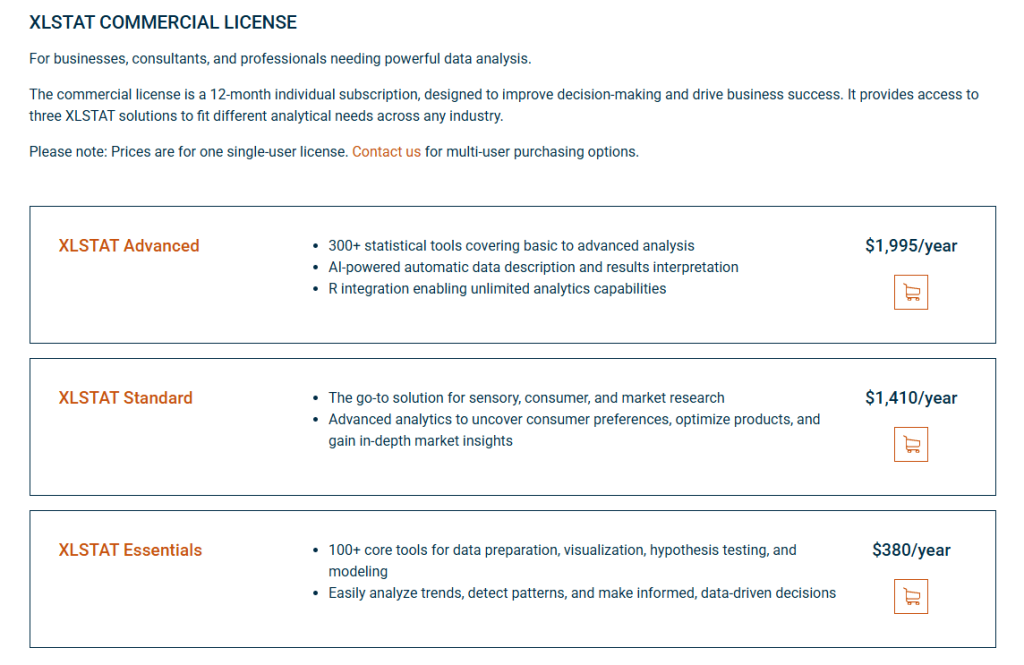
Educators and researchers receive a discounted price, while students are eligible for the largest discount, allowing them to access the advanced plan for $69 per year.
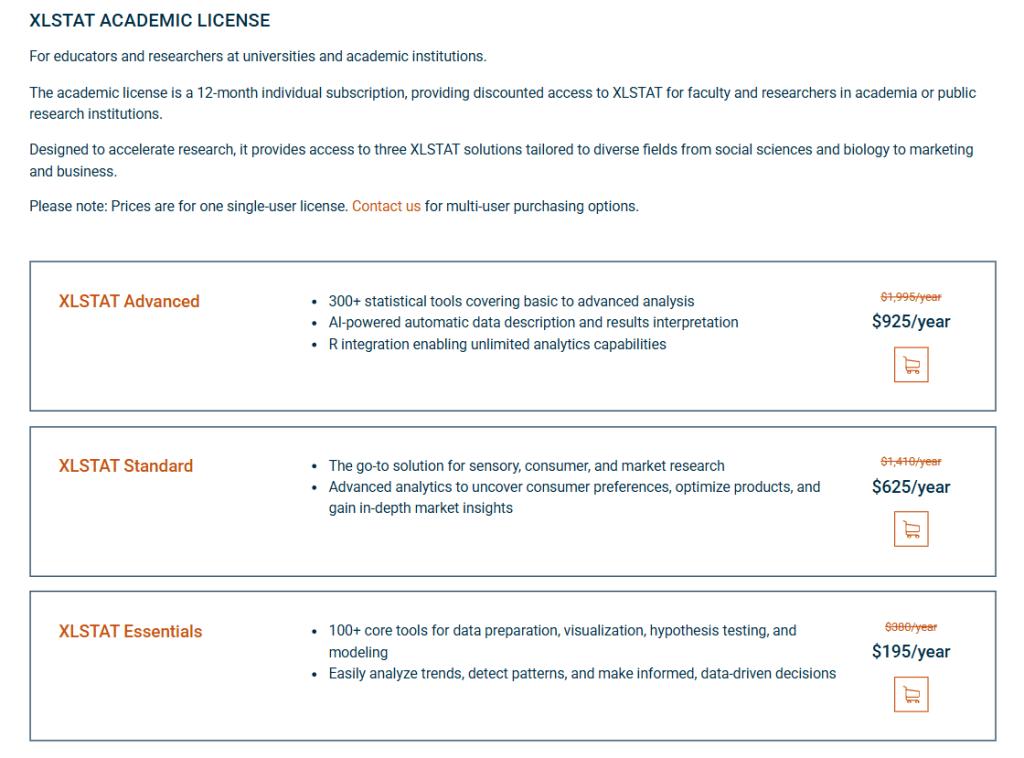
Learning Curve
XLSTAT is designed to be accessible for users with basic Excel skills, making entry-level statistical analysis straightforward. However, advanced modules and machine learning features may require some statistical background and additional learning to use effectively.
7. Cube
Cube is a Financial Planning & Analysis ( FP&A ) platform designed to work seamlessly with your existing spreadsheets and financial models. Its no-code approach lets finance teams integrate powerful planning and forecasting capabilities without replacing established processes.
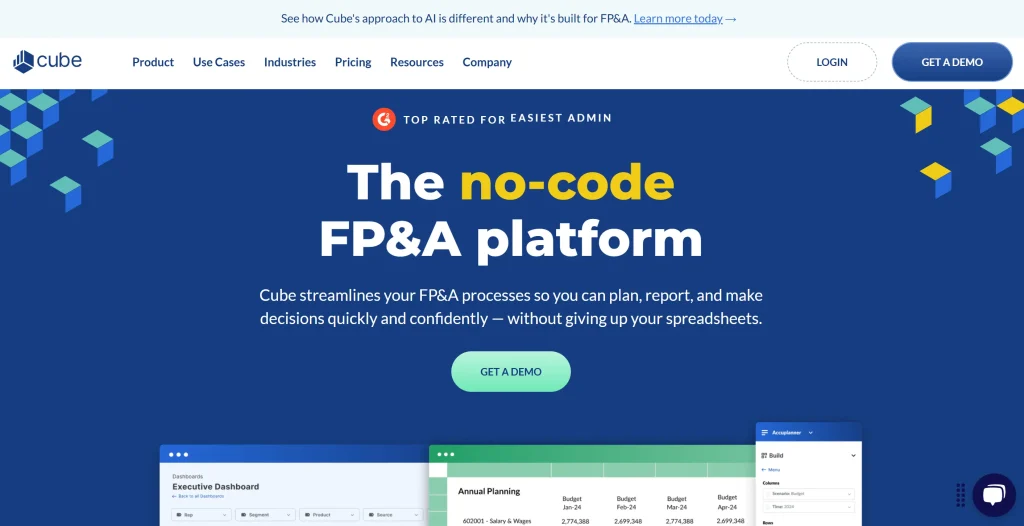
Target Users
Cube primarily serves finance professionals and teams, but also extends well to founders and business leaders who rely on accurate financial planning. With its focus on flexible budgeting, forecasting, and reporting, Cube adapts to industries like real estate, healthcare, manufacturing, and non-profits.
Cube Key Features
- Finance-Driven Design: Built by finance professionals for finance teams, Cube incorporates industry best practices and insights from a community of strategic finance experts.
- Excel-Friendly Live Sync: Cube integrates spreadsheets with live ERP and accounting data, thus keeping workflows intact and data always updated.
- Collaborative Modeling: Multiple users can work concurrently on financial models, reducing version conflicts and improving teamwork.
- Automated Reporting: Customizable reports and automated consolidation streamline financial reporting and reduce manual errors.
- Robust Security: Includes role-based access control and encryption, as a result safeguarding sensitive information.
Cube Cons
- Limited customization and integration flexibility: Users may find restrictions in tailoring workflows or adapting the interface, and support for third-party app integrations is relatively narrow compared to more extensible platforms.
- No Upfront Pricing: Full pricing details are only available after signing up, which may be inconvenient for comparison shopping.
Pricing
Cube does not provide pricing information upfront. The pricing is customized based on your business needs, so you pay only for the features that match your FP&A requirements. The overall cost depends on factors such as company size, the complexity of your data integrations, and reporting needs.
To get detailed pricing information, contact Cube directly.
Learning Curve
Cube combines powerful features with a straightforward design, though new users may need some time to get comfortable. Customization options require a bit of guidance, but ultimately help improve financial accuracy and reduce manual work.
Summary of AI Tools for Excel Data Analysis
Here is a quick comparison table of all Excel AI tools and their features:
| Tool | Best For | Key Features & Pros | Pricing | Cons | Learning Curve |
|---|---|---|---|---|---|
| Ajelix | Non-tech users with general data struggles, and CEOs, managers, and founders needing data insights and and analysis | 20+ AI tools, BI platform, real-time dashboards, no coding, fast analysis, and reports. multilingual, transparent pricing | Offers the freemium approach, has 4 pricing plans. The first two plans are designed for users of mainly AI Tools. The more advanced plans are designed for BI users. | Rich variety of features can feel confusing at first, but thought-out onboarding and documentation are available | Easy to start, BI features might need a little exploration |
| Powerdrill | Different industry professionals needing data insights | Natural language interface, fast analytics, predictive tools, shareable dashboards | Offers the freemium approach, has 4 pricing plans. The more advanced the plan, the larger the quota for the features. | English-only, resource-heavy tool | Simple for basics, moderate for modeling |
| XLSTAT | Statisticians, students, and educators | 300+ stats tools, Excel-native, R integration, academic plans | Offers 3 pricing plans. Discounts are available for students and educators. | Excel-only, limited language support | Advanced features may require some statistical background |
| GPTExcel | Excel users with no complex workflows | Different tools, like formula & SQL generators, image-to-table, 50+ languages | Offers 2 plans: Free and Pro plan. | Limited to Excel/CSV, not ideal for complex workflows | Beginner-friendly; moderate learning for advanced use |
| Numerous.ai | Only Excel or Sheets users | In-cell AI (=AI()), text generation, SEO content, easy setup, Sheets/Excel integration | Sign up for pricing information | Add-on only, no visible pricing | Easy for spreadsheet users; limited customization |
| Julius | Students, researchers, teams | Stats assistant, multi-AI engine, secure sandboxing, live sync, team collaboration | Offers 4 pricing plans, academic discounts are available. | Community Forum users report slow performance, bugs and unresponsive support. | Conversational but easier with data/science familiarity |
| Cube | Finance teams & CFOs | FP&A platform, Excel sync, live ERP data, collaborative modeling, no-code | Contact for pricing information | Limited integrations, no visible pricing | Friendly UI; some learning for deep financial modeling |
Free PDF Checklist: Your AI Tool for Excel Data Analysis
To help you figure out which Excel AI tool is the right step forward, we’ve created this quick checklist to guide your evaluation. You can download it for free.
Conclusion
These AI tools for Excel data analysis are seriously changing the game, helping you work faster, smarter, and with fewer errors. Whether you’re a manager, analyst, or founder, there’s a tool here to fit your needs.
Use our free checklist to find your best match, and don’t hesitate to test a few tools, like the AI Data Analyst, yourself. See what clicks, and let AI take the heavy lifting off your spreadsheets!
Eager to learn more about Excel and AI? Feel free to explore our blog section and socials.
FAQ
It depends on your needs, and you can use the Ajelix checklist to evaluate each tool. Ajelix stands out for users who want a more all-in-one approach. With over 20 AI tools and a BI platform, Ajelix is ideal for those looking to simplify data work without coding
AI is changing how spreadsheet users work with Excel by automating complex, repetitive, and time-consuming tasks, making data analysis faster, easier, and more accurate.
AI Excel tools that provide visible pricing include Ajelix, Julius, Powerdrill AI, XLSTAT, and GPTExcel, allowing users to evaluate plans and features easily without signing up.
Most tools in this article are focused on ease of use. However, tools like Cube and XLSTAT, with their advanced statistical features, might have a steeper learning curve, better suited for users with some data background.
No, most AI tools for Excel, such as Numerous.ai or Ajelix, are designed to be beginner-friendly and require little to no coding skills.


